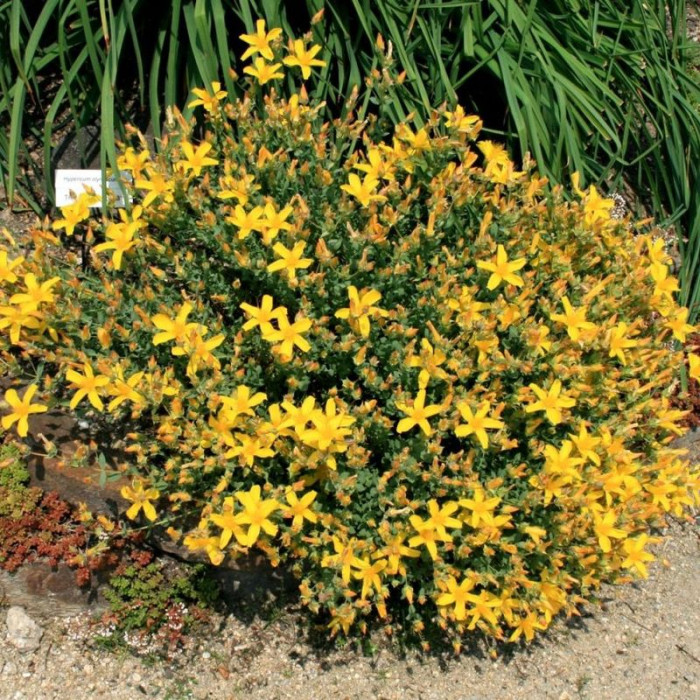St. John's wort or perforatum / Hipericum perforatum
Perennial herbaceous plant, up to 1 m high, with a taproot, strongly branched rhizome. Stem erect, glabrous, branched at the top. The leaves are small, sessile, opposite, with scattered, translucent dots. The flowers are golden yellow, collected in a corymbose-paniculate inflorescence. Flowering in July-August, fruiting in September.
Due to the unreasonable approach to harvesting, natural reserves have sharply decreased. Therefore, it is recommended to grow it in personal plots. Sow seeds before winter (October) or early spring. For digging it is necessary to add 3-4 kg / m2 of rotted manure and peat compost or 2-3 kg / m2 of nitrogen, phosphorus, potassium. Seeds are sown superficially, without incorporation into the soil. The seeding rate is 0.3-0.4 g/m2 with a row spacing of 45 cm. However, it is better to grow St. John's wort seedlings in warm or cold greenhouses and ridges. Best results are obtained with potted seedlings.
Plants tolerate transplanting well and can be harvested much earlier. In the first month, seedlings need careful care, they are tender and develop very slowly. After 1.5-2 months after emergence, seedlings are fed with nitroammophos at the rate of 2 g/m2. During the growing season, it is necessary to carry out 3-4 manual weeding. Already by the end of the first year, some specimens bloom, but abundant flowering is observed only at 2-3 years of age. With age, development and growth of plants, the yield also increases.
In medicine, chronic gastritis, enteritis, colitis, functional diarrhea, chronic pyelonephritis, catarrhal sore throat, stomatitis, trophic ulcers, burns, gingivitis, paradontosis, simple vaginitis, acne, chronic suppurative otitis media, mastitis, anemia, hemorrhoids, jaundice, migraine , hypertension, cough.

No questions about this product, be the first and ask your question.



















